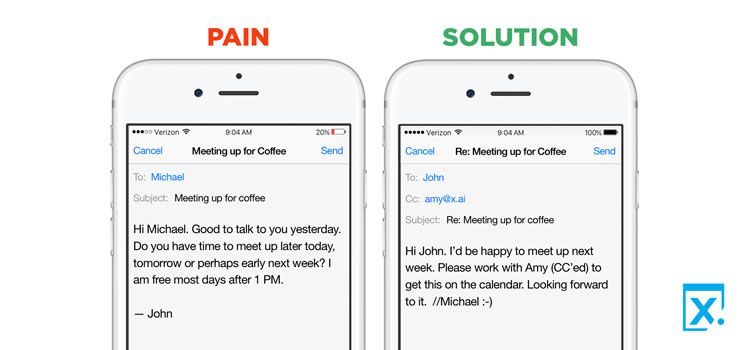One of the biggest technological revolutions in recent history has been the advent and increased precision of machine learning. Artificial intelligence (AI) is ushering in a new era of the “emotionally intelligent web.” Emotional intelligence has never described machines until now – it was a feat scientists believed outside the realm of possibility.
Yet as computerized simulations of intelligent behaviors become more advanced, it is reasonable to say emotionally intelligent machines will disrupt industries in the near future. One such industry is web design.
The Emotionally Intelligent Web
First, let’s delve into the emotionally intelligent web – what is it, and how are people using it? Emotional intelligence is the ability to manage relationships with others and understand emotional information. According to Daniel Goleman, a science journalist, emotional intelligence has five main characteristics:
- Self-awareness. The ability to recognize moods, emotions, and drives within oneself, and their effects on others.
- Self-regulation. The ability to control disruptive moods and impulses, and to suspend judgment and think before taking action.
- Internal motivation. A passion or determination to work for internal reasons, such as an inner vision of what is truly important in life, instead of external factors like money and fame.
- Empathy. The ability to understand the emotions of other people. Empathy is the skill of treating people according to their emotional makeup.
- Social skills. The ability to manage relationships and cultivate networks, finding common ground with others and building rapport.
At first look, these five components seem impossibly human. After all, how can a robot have internal motivation without a heart, brain, or soul? How can a chatbot have empathy when it has never experienced what a human has gone through? Thanks to greater quantities of data and sophisticated technologies to interpret and use this data, AI has begun to crack the code of emotional intelligence and finally react like a human.
The emotionally intelligent web connects with users on a deep, emotional level. Websites that are emotionally intelligent should give users a good impression, and a positive visceral, or gut, reaction.
Today’s web designers already implement the characteristics of emotional intelligence in their user experience (UX) best practices as much as possible – using storytelling to convey emotion and connect with users on a deeper level. However, artificial intelligence and emotionally wise chatbots may be able to achieve this connection on a much more personal level.
Current Companies Using Emotionally Intelligent Machines
Many designers are using AI and emotionally intelligent web programming to change the way their brands and products interact with users. For example, meet Amy.
Amy is an AI-powered personal assistant who can schedule meetings using very human-like learning. First, she gains an understanding of your schedule and preferences. Then, you simply CC: [email protected] in your email with a coworker and she’ll handle the rest. The emailing back and forth to assign a date, selecting a time that works for you, and putting it on your calendar is all an automated process – with no one the wiser.

Amy learns and forms responses using emotional intelligence, making her incredibly human-like via email. People using Amy have even reported clients calling the office and asking to speak with the “assistant” Amy – only to be shocked to find that she is, in fact, a robot.
Amy makes scheduling meetings, interviews, and even personal tasks a breeze – without the typical commands users would have had to use in the past. Amy reads and understands emails, and knows how to respond like a human would. This is just one example of how the emotionally intelligent web has already changed the workplace.
Then there is Xiaoice, the amazing natural language chatbot Microsoft developed and launched in China.
Xiaoice runs on many Chinese services, and is used by over 40 million people today. Xiaoice is like Siri or Microsoft’s less popular chatbot, Tay. Except Xiaoice is a kind, friendly, and emotionally intelligent chatbot users can converse with like a therapist.

Xiaoice listens with emotional cognition, and can reply accordingly. Using something called sentiment analysis, she adapts her phrasing and responses based on positive and negative human cues. She can exchange deep, incredibly human-like views on any topic. She can even become “embarrassed” or “angry” if she doesn’t know much about a topic. Xiaoice is showing users what the future of AI could look like.
AI’s Potential in Web Design
Artificial intelligence has incredible potential to transform many industries that center on people – for example, healthcare, hospitality, and customer service. One recent startup, CureMetrix, is already using AI algorithms to help medical professionals treat their patients.
AI is also changing the way users interact with the Internet. “Intelligent web” is beginning to detect, understand, and react to the emotions of users. This significantly changes how websites and web designers do their jobs.
Until now, the web has been emotionless and stark. Web design deals with digital terms, without the tools to make sites more emotionally capable. Today, however, researchers have broken emotionally intelligent web design down into smaller pieces. Now web designers are implementing the abilities to detect, recognize, and react to emotional input, programming these human-like capabilities into how a website reacts to users.
The future of web design is a platform that no longer requires users to augment how they naturally communicate for machines to understand them. Instead of changing searches and commands into digital terms, users will be able to communicate the way they would with a human. As AI becomes more sophisticated thanks to more available data, the world is seeing an incredible shift – a transition toward the emotionally intelligent web.
Emotionally Intelligent Websites
Robots are one thing – emotionally intelligent websites are another. Website designers and content writers already strive to make an emotional connection with the audience. They do this with more personal content marketing, riveting imagery, and videos that hit home with viewers. Yet something has always been lacking in terms of how a website connects with its users.
Websites still demand certain actions and commands to operate correctly. With AI and emotional intelligent machines, users have a new world wide web coming.
As we move into the future, more web designers will engineer and develop sites to be emotionally intelligent. Just like the brands they represent, websites will have their unique personalities. Sites will be able to augment and reflect users’ emotions in line with a brand’s voice, answering queries and clicks the way a user might expect the brand to.
These websites will be able to tune in on the user’s emotional preferences, adapt, and react appropriately to each individual person. This level of connection and personalization with a website will significantly improve first impressions and customer loyalty.
Is it possible to build a website that can influence the emotions of users to an extent that they will feel good about their interactions with the bot – and by extension, the company? Thanks to the emotionally intelligent web, many believe it is.
Websites can already collect user data such as browsing history and react to user preferences accordingly, recommending similar items and taking other related actions. In the future, websites will be able to establish a set of emotional states that reflect the personality of a brand – creating a powerful and intimate interaction between brand and user.
The Future of Web Design
AI and emotionally intelligent chatbots are developing quickly as researchers collect and learn how to analyze massive quantities of data. Using millions of data points gathered from users and interactions with humans, scientists are creating AI machines that think and sound more human.
Incorporating AI and emotional intelligence in a website can allow a business to analyze users’ emotions, empathize with their needs, and react appropriately to the individual user.
Humanizing the web has the potential to bring customers closer than ever to their favorite brands. Soon, companies will be able to communicate their vision, missions, and goals in a manner that’s more conducive to brand loyalty and a personal customer experience.
Stay tuned for further developments in AI, emotionally intelligent web, and emerging web design practices that are transforming websites as we know them.
Related Topics
Top